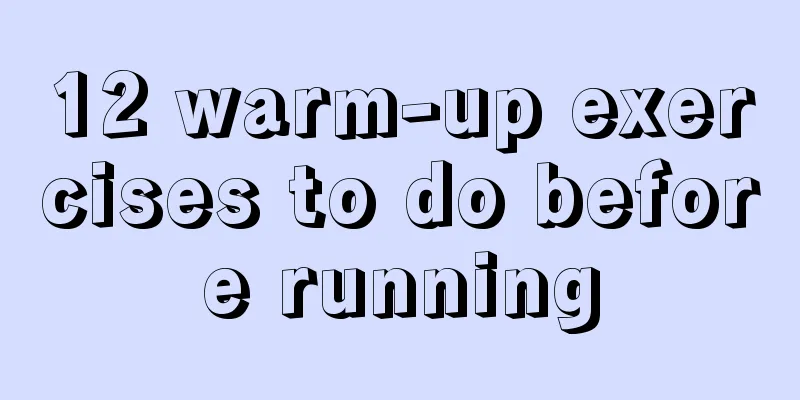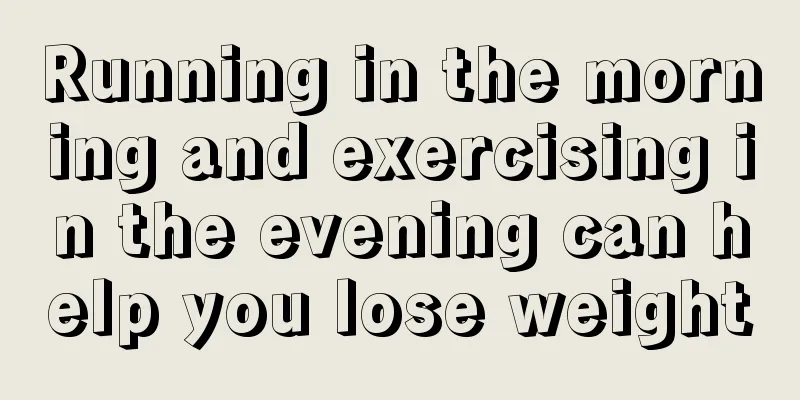If you feel pain here while exercising, go to the hospital immediately

|
Fitness experts remind people that many symptoms of physical discomfort that occur during exercise should be taken seriously. No increase in heart rate during exercise A person's heart rate increases when exercising, and the greater the amount of exercise, the faster the heart rate. If the heart rate does not increase significantly during exercise, it may be an early sign of heart disease, indicating the risk of angina pectoris, myocardial infarction and sudden death in the future. Angina during exercise During exercise, the myocardial load increases, causing myocardial oxygen consumption to increase. Especially for some middle-aged and elderly people with varying degrees of vascular sclerosis, exercise may cause relative blood supply deficiency to the heart, leading to coronary artery spasm and angina pectoris. When encountering this situation, you should stop exercising immediately. After taking nitroglycerin tablets sublingually, the angina pectoris will generally disappear. Headache during exercise A small number of heart disease patients do not feel any abnormality in the chest during an attack, but will experience headaches during exercise. Most people just think they didn't get enough rest or had a cold. Therefore, friends who participate in sports are reminded that if they feel a headache during exercise, they should go to the hospital for examination as soon as possible. Abdominal pain during exercise During exercise, sudden abdominal distension and pain are mostly caused by rectus abdominis spasm due to loss of water and salt through excessive sweating. When abdominal pain occurs, you should lie down and rest, do abdominal breathing 20 to 30 times, and gently massage the rectus abdominis for about 5 minutes to relieve the pain. When sweating too much during exercise, timely replenishing 200 to 300 ml of saline is the key to prevention. Abdominal cramps during exercise Upper abdominal colic is often caused by stomach spasms such as low water temperature during swimming, insufficient warm-up exercises, and excessive exercise. At this time, you can apply hot compress to the upper abdomen for 20 to 30 minutes, and press the Neiguan and Zusanli points with your hands for 3 to 5 minutes each. To prevent gastric cramps, you should do adequate warm-up exercises before exercise, avoid overeating, avoid eating beans, sweet potatoes, potatoes and other foods, and eat less cold drinks. When exercising, dull pain or bloating around the navel or lower abdomen is mostly caused by intestinal cramps. At this point, the pain can be relieved by simply stopping the exercise. You can also relieve pain by massaging the Hegu points on both sides with your hands for 5 minutes each, or applying hot water to the navel area for 10 to 20 minutes. To prevent intestinal cramps, you should do adequate warm-up exercises before exercise and avoid eating raw or cold foods. |
<<: Women must master the "scale" to avoid being hurt
>>: You must be willing to be the most beautiful pregnant woman
Recommend
What to do if your thighs ache after exercise?
Exercise is a very good thing, because exercise c...
Does running make your breasts sag?
Running has always been a popular form of sport. ...
Give you six-pack abs in eight minutes with these exercise principles
We can see that in reality many men have beer bel...
How to relax your biceps
Many men use different methods to exercise differ...
Is it useful to do abdominal exercises for eight minutes?
If the abdominal muscles can be trained well, it ...
Is it okay to exercise after meals?
Exercise is a good way to ensure our health and p...
Will running make you taller?
For children whose bones have not yet fully close...
How to do yoga to lose belly and waist
Yoga exercises can help our bodies realize their ...
Is it okay to do push-ups before bed?
In daily life, unless they are specialized in phy...
Can doing sit-ups after childbirth help reduce belly fat?
After giving birth, many women want to lose weigh...
How to practice yoga before bed
Doing moderate exercise before going to bed is ve...
6 bad fitness habits of men, the most deadly!
Simply going to the gym does not guarantee that y...
How to reduce fat on the buttocks?
In the aesthetic view of ancient people, "bi...
How to run for fitness?
Running for fitness also requires mastering certa...
Is it okay to go running at 8 or 9 in the evening?
Exercise is particularly important to us, and eve...









